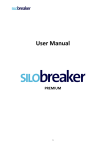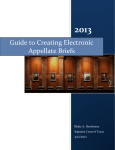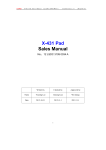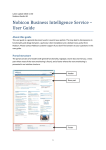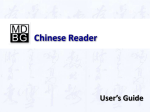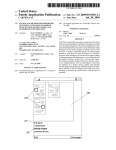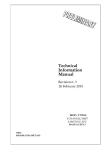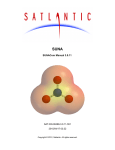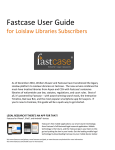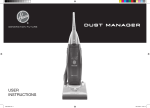Download User Manual
Transcript
User Manual
1
Contents
Introduction............................................................................................................................................. 3
Silobreaker Premium features ................................................................................................................ 5
Login .................................................................................................................................................... 5
The First Page ...................................................................................................................................... 5
Search, discover & analysis ..................................................................................................................... 6
Entities ................................................................................................................................................. 6
Benefits of “Entities” ....................................................................................................................... 7
Search & discover ................................................................................................................................ 7
Simple Search .................................................................................................................................. 7
Automatic Suggestions .................................................................................................................... 8
Entity search .................................................................................................................................... 9
Free text search and phrases .......................................................................................................... 9
Advanced Search Wizard ............................................................................................................... 12
360° Search result ............................................................................................................................. 13
Using “In Focus text mining” for better discovery. ....................................................................... 14
The Network Page ............................................................................................................................. 17
The Hot Spots Page ........................................................................................................................... 20
The Trends Page ................................................................................................................................ 21
The Time Series Page......................................................................................................................... 22
Monitoring agents and E-mail alerts ..................................................................................................... 24
My Page ............................................................................................................................................. 24
Create a new tab in My Page......................................................................................................... 24
General filter for the entire tab ..................................................................................................... 28
Setting up Widgets ........................................................................................................................ 29
Setting up an E-mail Alert for a My Page ...................................................................................... 30
Using the dashboard ..................................................................................................................... 31
Changing headings for a widget .................................................................................................... 32
Searching within widgets............................................................................................................... 32
Scrapbook ...................................................................................................................................... 33
Create “My List” ............................................................................................................................ 34
Adding new entities to “My List”................................................................................................... 34
Setting up “FROM and ABOUT” to Follow Your Influencers in a New Way .................................. 35
Export content to other applications ............................................................................................ 36
Content .................................................................................................................................................. 37
Security .................................................................................................................................................. 38
2
Introduction
Today’s deluge of information from old, new and social media, as well as from all internal sources,
forces us to deal with information in new ways. Long gone are the days when just access to
aggregated information was a competitive advantage. Today, it is all about how you manage to
benefit from too much information that decides whether you’ll be able to stay ahead of the curve.
Silobreaker Premium is the most powerful intelligence and media-monitoring product online for
corporate, financial, non-profit and government agency users. Whether your focus is on competitive
intelligence, early warning, risk management, media-monitoring, news search or all of the above,
Silobreaker Premium keeps you in the know.
Available as SaaS (Software as a Service) in a single intuitive and secure user interface, you can define
monitoring targets, trigger content aggregation, perform analyses, and display results in customized
dashboards, e-mail alerts or by auto-generated reports. Silobreaker Premium enables you to:
·
·
·
·
·
Set up watch lists and collaborate with colleagues
Monitor old, new and social media content
Upload internal content for side-by-side analysis against unstructured web content
Track big movers in the information flow by “heat” tools and other analytics
Save and export findings straight into 3rd party applications
Silobreaker Premium removes the limitations of traditional keyword-based queries and combines
content aggregation with analytical tools and visualizations that help users improve their monitoring
and discovery as well as analyze and make sense of their findings more efficiently – straightaway and
across user groups.
3
Difference Silobreaker.com vs. Silobreaker Premium
When migrating from Silobreaker.com to Silobreaker Premium you will discover new features and
content. The main differences between Silobreaker.com and Silobreaker Premium are:
4
Silobreaker Premium features
The features are divided into the following chapters
·
·
·
·
·
Log in & First page
Search, discover & analysis
Monitoring My Pages and alerts
Premium content
Security
Login
To access Silobreaker Premium, you need a password and a user name. Click the “Log in” tab on the
Silobreaker home page www.silobreaker.com, enter your user name and password and click the “Log
in” button.
The First Page
Silobreaker's First Page shows latest stories across
all topics as well analytical results for the overall
news flow. People, companies and other entities
that are "hot" in the news are highlighted as well
as visualizations of “hot spots” around the world.
The First Page is a great starting point for checking
up on the latest news and offers many ways to
narrow your search or for navigating to more
specific areas on the site.
You can mouse-over or click on almost everything
on the page, allowing you to put the search result
in context, drill-down or quickly switch focus to
gain higher relevance or faster insight. Just click on
any name and you'll go directly to that name's
360-page, which then becomes the new focal
point.
5
Search, discover & analysis
The whole philosophy behind Silobreaker is to move away from the traditional keyword based search
query which generates page after page of headline results and forces the user into a loop of
continually adjusting the query to find relevance and context. We see the keyword-based query as a
possible entry point; followed by graphical search results which enable the user to discover, navigate
and drill down further, without having to type in new keywords. It would be difficult to imagine
managing numerical data without the use of descriptive graphical representations. Silobreaker
believes that the same principle applies to handle vast quantities of textual data – descriptive
graphical representations are not a luxury, but a necessity when trying to digest the vast quantities of
information and data currently seen in today’s world.
Traditional search engines require you to accurately pinpoint your search. In many instances, you
need to be an expert in your field to take to full advantage of the information in databases and
unstructured text. The Silobreaker technology allows the novice to become an expert, and the expert
to become a discoverer. Silobreakers technology quickly moves the user closer to the many possible
“answers” by doing much of the searching and groundwork for them - freeing up time for analysis
and qualified decision-making.
Entities
“Entity” or “entities” is a central concept of the Silobreaker search and visualization technology. An
“entity” is a person, city, country or similar, and Silobreaker is entity focused because human
knowledge is “entity” focused. “Entities” are used by the Silobreaker technology to bring structure
and extract knowledge from unstructured data, like text in news articles.
“Entities” are linked to articles in Silobreaker because they are mentioned in such articles.
Silobreaker finds these “entities” and understands how they relate to each other in the news flow.
This is how Silobreaker is able to serve up its search results in so many different ways – and across
content types - enabling you to navigate and analyse without the need for keyword-based queries.
“Entities” are also referred to with different names: IBM and International Business Machines all
refer to the same company; the Silobreaker results are based on many different spellings and aliases
for each “entity”, rather than just a single search-word.
Entity definition of IBM Corp in Silobreaker
There are several millions of defined “entities” in the Silobreaker Premium database. The
administration tool for “entity” definitions are not generally available for users of Silobreaker
Premium and thus managed by Silobreaker. As part of becoming a Silobreaker Premium customer,
6
Silobreaker works together with the customer to ensure all required “entities” of interest are defined
in the system with the right aliases and conditions for contextual search.
Benefits of “Entities”
·
·
·
Simplifies your search. Instead of typing long search phrases with different spelling
combinations, you define the search string once and the use the defined “entity”.
Simplifies your use of “filters”. Instead of typing long filter phrases with different spelling
combinations, you define the “filter” once and the use the defined “entity”.
The “Entities” feature improves the analysis, mapping data to objects and giving life to
visualization models.
All content is also classified after Silobreaker's Topics, such as "Solar Power" or "Terrorism". All
documents do not need to mention the name of a topic in order to be linked to it. Silobreaker
extracts the general understanding of the document from the “entities” in it and links it accordingly
to its topics-structure.
In Silobreaker you can easily find the defined “entity”. It is all the words with an “[entity type]” that
pop up in the auto suggestion box.
Search & discover
Searching in Silobreaker is done from the “search-box” at the top of any page. Search results
are divided into five main categories which have been customized to allow the user to decide how he
would like to view the result; either as list of text documents or different visualizations:
·
·
·
·
·
360° Search
Network
Hot Spots
Trends
Timeline
Simple Search
Type in one or several search terms separated by space in the “search-box”, click “Search” and a new
search is performed and presented on the current page. The result is based on documents and
results matching all keywords that you entered.
7
Automatic Suggestions
While you're typing your keywords, you'll notice that Silobreaker automatically provides you with
“Entity” suggestions in a list just below the “search-box”. Choose one of the “entities” to find what
you're looking for faster and more accurately.
Working with filters
“Filter” (or Drill-Down), is a "search within search" functionality that enables you to find even better
contextual relevance or reduce your search result to a more manageable amount of content. Click
the “Filter” button to filter what you're currently seeing on the page and narrow down your focus.
You can "filter" your search result on any topic, term or “entity” you think is suitable, by either
clicking on the "drill-down icon" next to an entity in the "In Focus"-box or the right column of your
result page or by typing in the “filter term” in the
“search box” and clicking on the "Filter‐button"
(next to the Search‐button).
Whenever you have “filtered” a page in any way
(by using the search-box or by drilling down) you
will see that there is a yellow “filter box” at the top
of the page. This shows the “current applied filter”, which is used to narrow down all content and
analytical results for that page. You can easily remove the “filter” by clicking on the small "closesymbol" in the “filter box”.
More Search Options
·
·
·
·
·
If you already know what type of “Entity” you are looking for, such as a person, a place or a
company, you can prefix your search-term with the type: “Person: Barack Obama or Barack
Obama [Person]”. The “entity” types include: person, company, organization, keyphrase,
product, city, country, topic, site, industry and publication.
If you would like to search for a phrase, put quotation marks around your search terms –
example: "wireless network".
Using Boolean expressions: You can use the operators “AND, OR and NOT” to create more
advanced queries.
You can also search or “filter” a current page to only include results from a certain
Publication by typing – “Publication: New York Times or New York Times [Publication]”.
If you would like to search for words that appear close to each other in the text, put
quotation marks around your search terms and add the symbol “~” followed by the number
of allowed middle words that you want to allow. The search for ”George Bush”~2 will then
8
·
results in documents containing "George Bush", "George Walker Bush" or "George Herbert
Walker Bush".
You can also group search expressions between Boolean operators by using parentheses –
“Barack Obama and smoking and not ("smoking gun ").
Entity search
If you would like to use a defined “entity” for your search, start typing the name in the “search” or
“filter box” and use the suggestions presented by the auto complete function. The auto complete
function presents the “entities” according to content volume. You can also type in “entities”
manually in your search or “filter box”. For manual “entries” use the following format:
For example:
person:Bill Clinton
company:Microsoft Corporation
organization:Greenpeace International
keyphrase:emission
product:twinrix
city:London
country:France
topic:merger & acquisitions
industry:Media & Advertising
publication:New York Times
Free text search and phrases
If no “entity” defined matches your search or filter need, you can use any type of word and/or
combination of words in the same way which you currently use the search function in a regular
“Google type” search engine. The search engine supports all Boolean expressions.
For example:
”new contract” OR partnership
You can also combine the use of defined “entities” and free text search
person:Bill Clinton AND partnership
Common Boolean operators
AND
Both parts of the search expression must be included in the result of the search.
smoke AND oil
You can also type “AND” expressions using the enter key:
smoke oil
9
OR
One of the search expressions must be included in the result of the search.
environment OR climate
NOT
Excludes all articles including defined keywords.
smoke AND NOT oil
Silobreaker specific search operators:
FROM
Presents the information written by a specific person, organization or publication.
Example:
FROM Country:United Kingdom
“Filter” the search to include only documents published from news sites in the United
Kingdom
FROM Person:Bill Clinton or FROM Organisation: Clinton
Global Initiative
This search will present blogs or Twitter from Bill Clinton or the organization Clinton
Global Initiative. For the “from” feature to work properly, all included blogs, Twitter
accounts etc. must be “mapped” to an “Entity”. This service is included in the
Silobreaker Premium subscription. As a user, you supply the list of influencers and
their blogs and twitter addresses to your Silobreaker contact sales rep, who will “map”
the information to the right “Entity”.
list:
Provides information about one or more of your entities defined in a watch list,
defined in “My List” (see the “My List” section of this user guide for additional
information on this function).
Example:
list:My Competitors
Using the search wizard, you can click a drop down menu to see your defined ”My
Lists.”
doclang:
Filter the search to a specific language.
Example:
doclang:swedish OR doclang:german
doctype:
Filter the search to a specific document types. The document types are Article (News),
Special Report, Blog, Press Release, Audio/Video and/or Fact Sheet
Example:
doctype:Article OR doctype:Blog
doctype:Press Release
10
fromdate:
Presents only information that was published after a defined date.
Example:
fromdate:2010-05-01
(Format (YYYY-MM-DD))
Presents only information that was published after 2010-05-01
fromdate:-24h
Presents only information that was published the last 24 hours
fromdate:-15
Presents only information that was published the last 15 days
todate:
Presents only information that was published before a defined date.
Example:
todate:2010-05-01
(Format (YYYY-MM-DD))
Combined search phrases
You can also combine the different search expressions to create sophisticated search strings. These
can also be grouped using parenthesis.
Person:Barack Obama AND smoking AND NOT (“smoking gun”)
Searches for articles about Barack Obama and smoking, but shall exclude articles including the
expression ”smoking gun”.
FROM list:My Competitors
Presents the information written by one or many “entities” defined in a My List. A prerequisite is
that, for the “from list” feature to work properly, all included blogs, Twitter accounts etc. must be
“mapped” to an “Entity”. This is a service included in the subscription for all Silobreaker Premium
customers. As a user, you supply the list of influencers and their blogs- and twitter addresses to your
Silobreaker contact sales rep who will map the information to the right “Entity”.
Person:Carl Bildt AND doclang:Swedish
Searches for information about the politician Carl Bildt in Swedish articles and documents.
fromdate:2010-05-01 todate:2010-07-01
Presents only information that was published in between a defined time period.
Whenever you have “filtered” a page in any way, you will see a “yellow filter box” at the top of the
page. This shows the current “applied filter”, which is used to narrow down all content and analytical
results for that page.
11
Advanced Search Wizard
You can access more advanced search options by clicking the “Advanced Search” link just below the
“search box”. Using this tool you can “filter” you search based on content type, source and date
range etc.
12
360° Search result
The “360-page”, which is one of the most central pages in Silobreaker, provides you with a full search
result around your search term, a person, a company, an industry or any other type of “Entity”. The
“360-page” shows the latest news, blogs and selected multi-media content, as well as Silobreaker's
analytical tools - all in one single page.
13
What's on the page?
The wide left column displays the latest news, blogs and selected multi-media content relevant to
your search. The "analytics-column" to the right provides several contextual views of the search
result. At the top of the page, you'll find a short summary and an image of the “entity” when
available; many of the “entities” will also have an included link to a fact-sheet, providing a short
background and history.
How is the result generated?
The “360-page” results are either based on structured data directly linked to the given “entity” (such
as fact-sheets for people or geographic maps for cities), or they are based on all documents linked to
the given “entity”, which is the case for "latest stories".
Silobreaker also looks at the importance of an “entity” in text when it generates the result. For
example, the “Top Stories” list will prioritize stories where the “entity” is mentioned very frequently.
Using “In Focus text mining” for better discovery.
The “In Focus text mining box” is one of the discovery tools you can use to more efficiently discover
and find information when using the “360-page”. For every search you do, the “In Focus text mining”
widget will display the most frequent persons, companies, organizations, key phrases, topics,
products, places, countries and publications mentioned in your search result.
For example, searching for David Cameron will give you several thousand articles. By extracting the
“In Focus” widget you will get a quick understanding what these articles are about, who is involved,
who has written about David Cameron and what geographical locations are interesting in
relationship to David Cameron. Whenever you add a new “filter” on top of your search or change the
search criteria, the “In Focus box” will change accordingly; analyzing the articles based on your
search “filters”.
14
Extracted In Focus widget when searching for David Cameron [Person]
15
You can also “filter” the information by hovering over the “In Focus” box and click the “filter” icon.
16
The Network Page
The “Network Page” finds things in the search result for you – people, organizations, topics, places
and keywords; understands how they relate to each other in the news and displays these
connections in an interactive “network”. This enables you to explore and see beyond your original
focus.
You access the “network” but enter your “search phrase” in the “search box” at the top and press
“Network” or click on the “network widget” in the “360 page”.
17
The “network” shows “entities” as small icons and “relationships” as connecting lines between the
different “entities”. Strong “relationships” are displayed with stronger connections and “entities”
with common “relationships” are visually grouped together. The sliders above the “network” can be
used to change the composition of “entity types” in the “network”.
The right hand side shows “related entities”, which allows you to “filter the network” on a certain
topic. At the bottom you'll see ‘related documents and quotes”.
Interacting with the Network
By hovering with the mouse over
an “entity name”, a “pop‐up”
appears that shows how the
name fits in contextually with
your search. By hovering over a
“midpoint” of any “relationship”,
you will see how the connection
fits in and a list of documents
showing the "evidence" for that
connection.
Any unwanted “entities” can be
“dragged” and “thrown away” in the "trash can" which is located in the lower right corner. This
allows you to remove already known “relationships” and “entities” that you want to exclude from
your analysis.
How is the result generated?
A key aspect of the “network” is that nothing is manually configured or structured beforehand.
“Networks” are generated on the fly when you make a query and will change dynamically over time
as new documents are being published and imported into the system.
The “network” is generated in two steps: First, the “search query” is used to extract the most
relevant “entities” from the documents matching the “search”. Secondly, the documents are
“analyzed” to identify links between these “entities”.
“Network links” are based on co-occurrence in documents. If two “entities” are mentioned in the
same paragraph it's an indication, or “evidence”, that they in some sense are related. Each
connection in the “network” is based on such “evidence”. The “evidence” is extracted from all the
documents related to the “network search”. Once a “filter” has been applied, then only documents
matching that “filter” are used for the analysis.
The “Network Pages” shows a maximum of 30 “entities” in the same “network” and is based on
frequency. If your “drag” one “entity”, displayed in the “network”, to the “trash can” the “Network
Page” will use new “entities”, if available with less frequency.
18
Full Size Visualization
When using the “network” page, “times series” and other “visualizations” pages you can use the
maximize icon to increase the work area.
Click on the “maximize icon” in the upper right corner and the “visualization” will use the full screen.
To get back to “normal page layout”, click on the same icon again
19
The Hot Spots Page
“Hot Spots” Search provides
“geo‐mapping” of news
events and displays global or
local "hot spots" for any topic
which has been selected.
The size of the “hot spot”
indicates the size of the news
story in terms of “document
volume” and the intensity of
the red color shows how
recent the story is.
Interacting with the Map
By hovering with the mouse
over a “hot spot”, you will see
a “popup” displaying a link to
the story that generated the “hot spot”, click on it for further analysis.
The map is interactive, which means that you can “pan and zoom” in the map by “dragging” with the
mouse or by using the “slider” on your left hand side or by using the mouse wheel.
You can always “change focus” of the “Hot Spots” page by “filtering” on a certain topic. If you
“filter” the page on a geographical area, such as a country, the map will zoom in on that specific
country.
How is the result generated?
Silobreaker has access to a geographical database of almost 300,000 places, including local names
and geographical coordinates. This database is used to link documents to geographical areas
whenever a document mentions a place or a city.
When a “hot-spot search” is performed, Silobreaker searches for stories that are highly
geographically oriented, i.e. stories where geographic names have a high relevance.
Only stories based on at least three documents are considered, so for example, a story reported by
only two publications will not generate a “hot spot”.
For each story found, the most important place is “extracted” and is used to pinpoint the “hot spot”
on the map. This means that if the story mentions two different places, the “hot spot” will be placed
on the most important one.
If a country is added to the “filter”, the “hot-spot search” will only consider stories that are located
within that country.
20
The Trends Page
With the “Trends Page” you can compare people, companies or products to see who or what attracts
most media attention based on mentions in the news. Essentially, it enables you to gauge trends
from what the aggregate press corps is writing about.
If you go to the “Trend Page” by doing a “Trend Search” for an “entity”, you'll see that Silobreaker
automatically suggests two other related “entities” of the same type for comparison in the chart.
However, you can
easily replace the
suggestions by either
selecting from other
suggested names
related to your
search or by using
the "Add"
functionality.
Please note: once
you have selected
the entities you have
to press the
"Refresh" button to
update the chart.
If you want to see the
“share of voice”
within a certain topic,
you can always add a
“filter” to the “Trend
Page”.
How is the result generated?
The chart shows the relative share of mentions in the news between the selected “entities” (Y‐axis)
and the overall article volume in which the “entities” are mentioned.
If a “filter” is added to the “Trend Page”, then the relative share of mentions is calculated based on
documents matching the current “filter”.
21
The Time Series Page
A “time series” is a useful way to visualize, analyze and present changes or events that occur over
periods of time. The Silobreaker “Time Series Page” allows users to view news, blogs and other data
sources on a browsable, graphical timeline where the search results are presented chronologically.
The “Time Series” allows the user to split the chronologically presented result on different sorting
criteria, such as;
• Source Country: Define your search and split the graph per country where the information was
published from.
• Publication:
Define your search and split the information per publication.
• Document Type: Define your search and split the information per document type, news articles,
blogs press releases etc.
If a “filter” is added to the “Time Line Page”, then the relative share of mentions is calculated based
on documents matching the current “filter”.
By clicking on a dot in the graph, the specific news articles etc. creating the position of the dot will be
displayed in the news list.
22
The “Time Series Page” can also be use to present a “time line graph” of different objects, not
relating to a general search phrase.
23
Monitoring agents and E-mail alerts
My Page
“My Page” enables you to design your own Silobreaker pages. You can mix and match between the
tools and features as well as “drag and drop” the “widgets” to personalize the layout. Once you’re
done, you can create a unique URL, by clicking on "Share My Page with
others", and make your “My Page” available to colleagues. The same
“My Page” tab will be created for any user who clicks on and activates
the unique URL.
You find “My Page” in the upper right corner of Silobreaker.
As a premium customer, you are given your own branded “My Page” which may be easily
customized by selecting among the following “widgets”: Top stories, News, Blogs, Reports/research,
Audio/video, All content, Network, Hot spots, Trends, Content Volume, Quotes, 360 profile, You Tube
videos Twitter, Social media search and In Focus.
You can create multiple “My Page” tabs, adapted for monitoring your specific areas of interest. For
example; you may choose to monitor your brand in press and social media, your competition’s
movements, industry trends, suppliers, key customers, prospects, key influencers, government and
authorities.
Create a new tab in My Page
For each widget a “filter” is set up, defining what information the widget shall display. When defining
a “filter” you can choose between using ready defined “Entities” and/or free key word search
phrases. If you want to form combinations of different search phrases, “entities”, Watch lists and
use the “AND”, “OR”, or “NOT” functions, you can use the “Wizard” to set up complex “filters”. All
“filters” are editable, allowing you to open an already defined “filter” and change the settings.
24
Choose between the following Widgets:
Top stories:
Shows the major news relating to your
“filter set up” based on algorithms relating
to that “filter set up”. When using the “Top
stories widget” you can choose to display
the top 4, 6, 12 or 17 news stories.
News:
Shows all “news” relating to your “filter set
up”. You can configure the “widget” to
display 5, 10, 20 or 40 news articles within
the same “widget”. The remaining articles
will be displayed on page 2 and sequentially
thereafter. The system allows you to choose
to display a heading & teaser or just a
heading plus show or hide duplicates.
Blogs:
Shows all “blogs” relating to your “filter set
up”. Configure the “widget” to display 5,
10, 20 or 40 “blogs” within the same
“widget”. The remaining articles will be
displayed on page 2 and sequentially
thereafter. The system allows you to
choose to display a heading & teaser or just
a heading plus show or hide duplicates.
Press releases:
Shows all “press releases” relating to your
“filter set up”. Configure the “widget” to
display 5, 10, 20 or 40 “press releases”
within the same “widget”. The remaining
articles will be displayed on page 2 and
sequentially thereafter. The system allows
you to choose to display a “heading &
teaser” or just a “heading” plus show or
hide duplicates.
Report/research:
Shows all “reports & research” relating to
your “filter set up”. You can configure the
“widget” to display 5, 10, 20 or 40 reports
within the same “widget”. The remaining
articles will be displayed on page 2 and
sequentially thereafter. The system allows
you to choose to display “heading & teaser“
or just “heading” plus show or hide
duplicates.
Audio/video:
Shows all “audio & video” relating to your
“filter set up”. Configure the “widget” to
display 5, 10, 20 or 40 “Audio/video” within
the same “widget”. The remaining articles
will be displayed on page 2 and sequentially
25
thereafter. The system allows you to choose to display “heading &
teaser” or just “heading” plus show or hide duplicates.
All content:
Shows all “news”, “blogs”, “press releases”,
“research & reports”, “audio & video” in
one “widget”, relating to you “filter set up”.
Configure the “widget” to display 5, 10, 20
or 40 documents within the same “widget”.
The remaining articles will be displayed on
page 2 and sequentially thereafter. The
system allows you to choose to display
“heading & teaser” or just “heading” plus
show or hide duplicates.
Network:
Visualizes relationships or associations found
in your search result in real-time;
understands how they relate to each other in
the news and displays these connections in
an interactive “network”. By hovering over
the midpoint of any relationship you can
easily see the articles that explain the
association.
Hot spots:
Provides geo‐mapping of news events and
displays global or local "hot spots" for any
topic that you have selected within your
search.
Trends:
Compare people, companies or products to
see who or what attracts most media
attention based on mentions in the news.
Note: When using the “Trend” widget, by
default, a “page filter” will be included. If
you wish to compare two companies such as
Ford vs. GM, do not use a “page filter “
unless you wish to “filter” the “trend “
widget for a specific topic such as mergers &
acquistions.
Content Volume:
Shows the number of documents (articles,
blogs and audio & video) that you have
selected within your search.
Heat for Entities in List:
Shows your entities in a heat sorted list. The
“Heat” indicates whether the amount of
documents, during the last day or week,
relating to your search is higher or lower
than average. “Heat” is useful in tracking big
26
movers in the news. The “heat” widget does not take any consideration
to defined “page filters” and is based on all news articles linked to the
“entities”
Quotes:
Auto-extracts “quotes” from the information
flow, either by or about the “Entity” in
question.
360 profile:
“Profile” widget of chosen Person, set up as
an “entity”.
Twitter:
Shows all “Tweets“relating to your “filter
set up”
Social media search:
Shows “social media” relating to you “filter
set up” from Twitter, Google Blog search,
Google Buzz and Facebook.
In Focus:
“In Focus” highlights the people, companies,
organizations, key phrases, products, cities,
countries, topics, industries and publications
that are most frequently mentioned in
relation to your search.
YouTube videos:
Shows all “YouTube videos” relating to you
“filter set up”.
Time Serie:
“Time Serie” widgets with auto refresh
capabilities. Split the graph according to your
choice.
27
General filter for the entire tab
When setting up a new “My Page” tab, you can create “general” and/or “specific page filters” for
each widget. A “general page filter” is very useful when creating a page where you want all the
widgets to use the same “filter”, for example your company name.
While typing your keywords (i.e. Ford), Silobreaker automatically provides you with “Entity”
suggestions in a list, just below the “search-box”. Choose one of the “entities” to find what you're
looking for faster, with more accurate search results or use a free text keyword, then click “Set
Filter”.
After clicking the “Filter button”, your “filter” is displayed in a yellow box.
Use the “Wizard” button if you would like to create a “filter” with combinations of many “entities”
and key search words. For example; you want your “My Page” tab to display information about
Mergers & Acquisitions relating to Ford Motor Company in China. Click on the “Wizard” button to
create your “Filter”. If no defined “entities” are available for your search, you may enter any word(s)
and press “enter”.
28
You can also “filter” on publications. For example; if you wish to see what The New York Times writes
about Ford and Mergers & Acquisitions, type your publication of choice in the “publication search
box” as follows: publication:New York Times, click “enter” and then click “search”.
The “wizard” is editable. This means that you can open the “Wizard” in a later stage and edit your
Filter. For example; adding words that should not be included in your search.
Setting up Widgets
When done setting a “My Page Tab filters” (if used). You can start building your dashboard using the
“widgets” of choice.
Simply click on the “widget” icon in the Set up menu, wait until the “widget” appears on the
dashboard and move the “widget” in one of the three columns using drag and drop. If you have no
need to further filter the specific “widget”, click on “save” in the “widget’s” upper right corner.
29
Multiple “widgets” can be set up using “different filters” or by adding more “specific filters” to one
“widget” on top of the “general page filter”. The “filter set up” is done after clicking the “widget”
icon according to the same principles as the “general page filter”.
Setting up an E-mail Alert for a My Page
The “My Page” dashboard will provide you with a set of tools to find, read and analyze the
information which matches your “defined filter”. As a user you can also set up an “E-mail Alert” for
the page. For example, you may set up an alert which shows all the latest news within your search,
delivered to your email as a report every morning at 08:00.
To set up an “Email Alert”:
·
Click on the “Create Email Alert” icon in the upper right corner.
·
Enter the recipients email addresses you wish to send the report to.
·
Set the delivery time and days you wish to receive the reports.
Note: If you would like to receive just a weekly report, mark only one day in the check box.
·
After defining the recipients and delivery options, click “save.”
The report will be delivered via e-mail in an html format presenting you with the latest incoming
news representing the last report from your “My Page” dashboard.
To remove an “Email Alert” or add recipients, click on the icon (now called “Modify Email Alert”)
again, click delete “Email Alert” or add more recipients. You may also change delivery options
and click “save.” An “Email Alert” sample is shown below.
30
By clicking on the header, the user will be directed directly to the original source and article.
Using the dashboard
When you hoover the mouse over a “heading” or “entity”, a pop up window will display additional
information about the article. If you would like to read the entire article, click on ”Read full article”.
31
Changing headings for a widget
If you wish to rename a “widget”, click on the
“heading”, type in the desired description and
click “OK.”
Searching within widgets
If you are looking for specific information relating to your “My Page” set up, you can search within
the “filters”.
For example: if you would like to search for articles about the Prime minister of China within your
Page, “Ford and Mergers & Acquisitions in China” without changing your permanent “filters”, simply,
add your search key phrase in the general search box, use the “free text key phrase” or a ready
defined “Entity” and click “Filter.”
The resulting display will show only, the information within your “widgets” and will only display the
information you are looking for, as represented in the example, “Ford and Mergers & Acquisitions in
China” and articles including the “Chinese Prime minster, Wen Jiabao.”
Creating widgets with multiple search phrases and entities
If you have many “entities” you would like to include in one “widget”, you can also use “My List” to
set up “watch lists” instead of typing in very long search phrases.
32
Scrapbook
The “scrapbook” is used for analyzing and reading articles in a separate page. You may select the
articles to send to the “scrapbook” by hovering the mouse over an article’s heading. When the pop
up window appears, click on the “send to scrapbook” icon.
To open the “scrapbook” in a separate page, click on the “scrapbook text” in the top menu or click
on the
icon if the “scrapbook widget” has previously been added to your page.
33
Create “My List”
Click on “My List” in the top menu bar to set up monitoring lists. In “My List” you can define different
groups of “entities”. For example: “my competitor”, “key influencers”, etc.
A “My List” can include: people, companies, organizations, key phrases, products, cities, countries,
topics, industries and publications
Your “list” may be shared with colleagues in either a “read only” mode, where other can use the
“list”, but not edit or as a “collaborative list”, where your colleagues can add entities to the “list”
which will also update your “list”.
Adding new entities to “My List”
To add new “entities” using “My List”, first type the word you are looking for, then select the
suggested “Entity” and click “Add Entity”. You can also include an “Entity” when using the regular
search page in Silobreaker.
For example: you find an interesting “Entity” in an article you are reading. By clicking on the name, a
“360 page” will open with all relating documents to this “Entity”. By clicking on the “List” icon under
the “Entity” name, you can automatically add this “Entity” to one or more of your lists. To
accomplish this, click on the “List” icon, mark the list that should include this “Entity” and click on the
“List” icon again.
34
Setting up “FROM and ABOUT” to Follow Your Influencers in a New Way
All organizations have different “influencers”. These can be politicians, authorities or influential
organizations, think tanks, bloggers, management executives or it can be specific publications.
Silobreaker allows you to not only see what media is writing about your “influencers”, but to also see
what your “influencers” are writing themselves in Twitter feeds, blogs etc.
To set up this feature, follow the steps listed below:
Create a list of your “influencers” in “My List”. Go to “My page” and start a new tab.
Create widgets with information FROM your “influencers”:
Type as a filter, from list:name of the list (for example, from list:Influencer) and you
will receive all feeds written by your “influencers”.
Create widgets with information ABOUT your influencers:
Type as a filter, list:name of the list (for example, list:Influencer) and you will receive
all news, blog press releases etc “ABOUT” your “influencers”.
Note: For the “From list” feature to work properly, all included blogs, twitter accounts etc., must be
mapped to an “Entity”. This service is included in the subscription for all Silobreaker Premium
customers. As a user, you must supply the list of “influencers” and their blogs- and twitter addresses
to your Silobreaker contact sales rep who will then map the information to the right “Entity”.
35
Export content to other applications
If you would like to “export” the information, from a “content widget” to other applications you can
use the “export function”.
For example, you would like to “export the
documents” to Microsoft Word in order to develop a
management report or a newsletter.
Follow the steps below:
Click in the “export” text at the top right corner of the widget. Choose the “format of the export”
(currently Silobreaker supports RTF and HTML export formats).
Note. As a Premium user we can only “export” the heading and teaser including the links to the
original source. In cases where you have included a premium source with full text rights, The
Silobreaker tool will display full text articles and full text export.
36
Content
With Silobreaker Premium you choose the “content”. As a default, any Silobreaker Premium user will
have access to “default content sources” provided in the Silobreaker Premium service. In the
Premium service we have a default “content database” of approx 35.000 sources. These are
primarily news sites, larger corporate news sites and larger blogs in English, German and Swedish.
These sources are included in the subscription. For blogs we can as an additional service include (and
index) all blogs that contains, by you decided selected key words. Thus, a total blog coverage for
selected areas. RSS, for sites offering RSS feeds, we can add these to the system and included in the
subscriptions fee you can request 200 RSS feed to be added to the system per year.
For social media, we offer, included in the price, a “meta search” of Google Buzz, Twitter, Facebook
and Google Blogs. A “meta search” means that that the information is presented in the system but
not indexed or saved. For video we currently import content from You Tube.
Adding Premium Content
In addition you can choose to import and index other “Premium content” sources and internal data.
The search, monitoring, analytical visualizations and e-mail alerts will work in the same way for
“Premium content” as for open source content. This means that purchased analytical reports will be
alerted to different subscribers, if relevant for their work, instead of having to search for information
stored within the company. The “Premium content” is only available for users with premium account
right access. Each user can be defined for which content he or she can have access to. This means
that not all users within the same organization must have the access to the same information.
Example of Premium Information sources are:
Premium external data
Factiva Dow Jones, Nexis Lexis, Hoovers, ProQuest , SITE Intelligence, Forrester, Frost and Sullivan,
Thomson Reuters, Gartner, Standard & Poors, Strategy Analytics, Industry subscription newsletters,
etc.
Internal data
Silobreaker premium can also include internal data, such as word documents, PDF documents, excel,
etc.
Import Formats
Silobreaker has vast experience in the integration of multiple and different content resources,
through various interface and use a very flexible XML format:
·
·
·
Any format that can be converted to XML can be imported
Ships with conversion support for TXT, Office formats (DOC(x), PPT(x), XLS(x), OpenOffice
formats, PDF
Other formats build to order
37
Security
When you access our site using industry standard Secure Socket Layer (SSL) technology, your
information is protected using both server authentication and data encryption, ensuring that your
data is safe, secure, and available only to registered users in your organization. Your data will be
completely inaccessible to your competitors.
Silobreaker provides each user in your organization with a unique user name and password that must
be entered each time a user logs on.
38






































